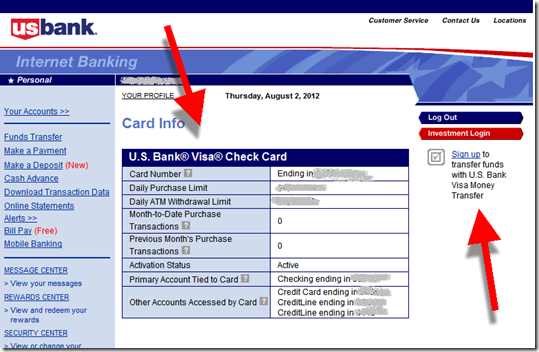
If you are looking to trade in the currency markets, it is important to understand the time frame. A timeframe is a visual representation for a currency's price movement. It can help traders identify trends before they occur. Forex analysts can use a time frame to help spot trends that have reversed.
Trade with the larger trend
Trading with the bigger trend is a powerful trading strategy which can generate huge profits. High leverage is the greatest advantage of trend trading. It means that FX gains can be magnified 100 times. Unlike stock markets, where leverage is usually set at around two to one, in the forex market, leverage is much higher. You can get as much as 100:1 leverage, which means that you only need $1 of margin to control $100 of currency.
Trend trading is an excellent investment option for the long term, but it is important that you are aware of its potential risks. Risk management is essential as you could lose more than you earn. It is best to not put more than 1.5-2.5% of capital at risk on any single trade. Also, you should use a trailing stop-loss order.

Analyzing trades in multiple time frames
It is important to use multiple time frames for trade analysis in order to minimize losses and make better decisions. Different time frames allow you to view the potential price movements and what should happen before you place a trade. This strategy also allows you to make a decision without being biased by your trading platform or open orders.
It is easy to perform multiple time frame analysis. Just look at the same currency pair in different time frames. You would then look for selling opportunities if EURUSD has a bearish trend in the 15-minute chart. It is the same thing if you examine the same pair in different time frames, such as daily, hourly or 15-minute.
You can spot trends and market sentiment more easily with longer time frames. But, shorter time frames are better at identifying ideal entry points and exit points. For example, a 4-hour chart is too vast for a beginner to see, so a 1-hour chart is best. For beginners, you should only use two frames at once. Multiple time frames can lead to confusion.
The right time frame is important
Forex trading is a complex business. The answer to the question of what time frame works best for you depends on your personality, trading style, and how much forex trading is done. While there is no clear definition for each time frame, most analysts agree that there are three main types: short, medium, and long. The type of trading you do, your trading capital and your trading strategy will determine the time frame that works best for you.

It all depends on you personality, how long you want to trade forex, and what strategy you choose. If you have low patience, a long-term strategy might not work for you. They are more likely to pull out of a trade in the wrong moment. Forex trading has many time frames. Many traders have difficulty finding the best one. You can trade in different time frames to compare their performance and find the one that works best for you.
Day traders generally prefer shorter timeframes. These timeframes give traders more freedom to enter and exit. They also offer more opportunities for beginners, giving them time to think before entering a trade.
FAQ
What should I consider when selecting a brokerage firm to represent my interests?
Two things are important to consider when selecting a brokerage company:
-
Fees: How much commission will each trade cost?
-
Customer Service – Will you receive good customer service if there is a problem?
A company should have low fees and provide excellent customer support. You won't regret making this choice.
What kinds of investments exist?
Today, there are many kinds of investments.
Some of the most loved are:
-
Stocks - A company's shares that are traded publicly on a stock market.
-
Bonds – A loan between two people secured against the borrower’s future earnings.
-
Real estate - Property that is not owned by the owner.
-
Options - The buyer has the option, but not the obligation, of purchasing shares at a fixed cost within a given time period.
-
Commodities: Raw materials such oil, gold, and silver.
-
Precious metals – Gold, silver, palladium, and platinum.
-
Foreign currencies – Currencies other than the U.S. dollars
-
Cash – Money that is put in banks.
-
Treasury bills are short-term government debt.
-
Commercial paper is a form of debt that businesses issue.
-
Mortgages - Individual loans made by financial institutions.
-
Mutual Funds: Investment vehicles that pool money and distribute it among securities.
-
ETFs: Exchange-traded fund - These funds are similar to mutual money, but ETFs don’t have sales commissions.
-
Index funds – An investment strategy that tracks the performance of particular market sectors or groups of markets.
-
Leverage is the use of borrowed money in order to boost returns.
-
Exchange Traded Funds, (ETFs), - A type of mutual fund trades on an exchange like any other security.
The best thing about these funds is they offer diversification benefits.
Diversification refers to the ability to invest in more than one type of asset.
This helps to protect you from losing an investment.
What are the types of investments you can make?
The main four types of investment include equity, cash and real estate.
The obligation to pay back the debt at a later date is called debt. It is used to finance large-scale projects such as factories and homes. Equity can be described as when you buy shares of a company. Real estate is when you own land and buildings. Cash is what your current situation requires.
When you invest your money in securities such as stocks, bonds, mutual fund, or other securities you become a part of the business. You are a part of the profits as well as the losses.
How long does a person take to become financially free?
It depends on many variables. Some people can become financially independent within a few months. Others need to work for years before they reach that point. No matter how long it takes, you can always say "I am financially free" at some point.
It's important to keep working towards this goal until you reach it.
Is it possible to earn passive income without starting a business?
Yes, it is. In fact, most people who are successful today started off as entrepreneurs. Many of them started businesses before they were famous.
However, you don't necessarily need to start a business to earn passive income. Instead, you can just create products and/or services that others will use.
For example, you could write articles about topics that interest you. You can also write books. You might also offer consulting services. You must be able to provide value for others.
Statistics
- Most banks offer CDs at a return of less than 2% per year, which is not even enough to keep up with inflation. (ruleoneinvesting.com)
- They charge a small fee for portfolio management, generally around 0.25% of your account balance. (nerdwallet.com)
- If your stock drops 10% below its purchase price, you have the opportunity to sell that stock to someone else and still retain 90% of your risk capital. (investopedia.com)
- 0.25% management fee $0 $500 Free career counseling plus loan discounts with a qualifying deposit Up to 1 year of free management with a qualifying deposit Get a $50 customer bonus when you fund your first taxable Investment Account (nerdwallet.com)
External Links
How To
How to Invest into Bonds
Bonds are one of the best ways to save money or build wealth. There are many things to take into consideration when buying bonds. These include your personal goals and tolerance for risk.
If you want to be financially secure in retirement, then you should consider investing in bonds. Bonds can offer higher rates to return than stocks. Bonds might be a better choice for those who want to earn interest at a steady rate than CDs and savings accounts.
You might consider purchasing bonds with longer maturities (the time between bond maturity) if you have enough cash. While longer maturity periods result in lower monthly payments, they can also help investors earn more interest.
Bonds come in three types: Treasury bills, corporate, and municipal bonds. Treasuries bill are short-term instruments that the U.S. government has issued. They pay low interest rates and mature quickly, typically in less than a year. Large corporations such as Exxon Mobil Corporation, General Motors, and Exxon Mobil Corporation often issue corporate bond. These securities generally yield higher returns than Treasury bills. Municipal bonds are issued in states, cities and counties by school districts, water authorities and other localities. They usually have slightly higher yields than corporate bond.
Look for bonds that have credit ratings which indicate the likelihood of default when choosing from these options. The bonds with higher ratings are safer investments than the ones with lower ratings. The best way to avoid losing money during market fluctuations is to diversify your portfolio into several asset classes. This helps prevent any investment from falling into disfavour.